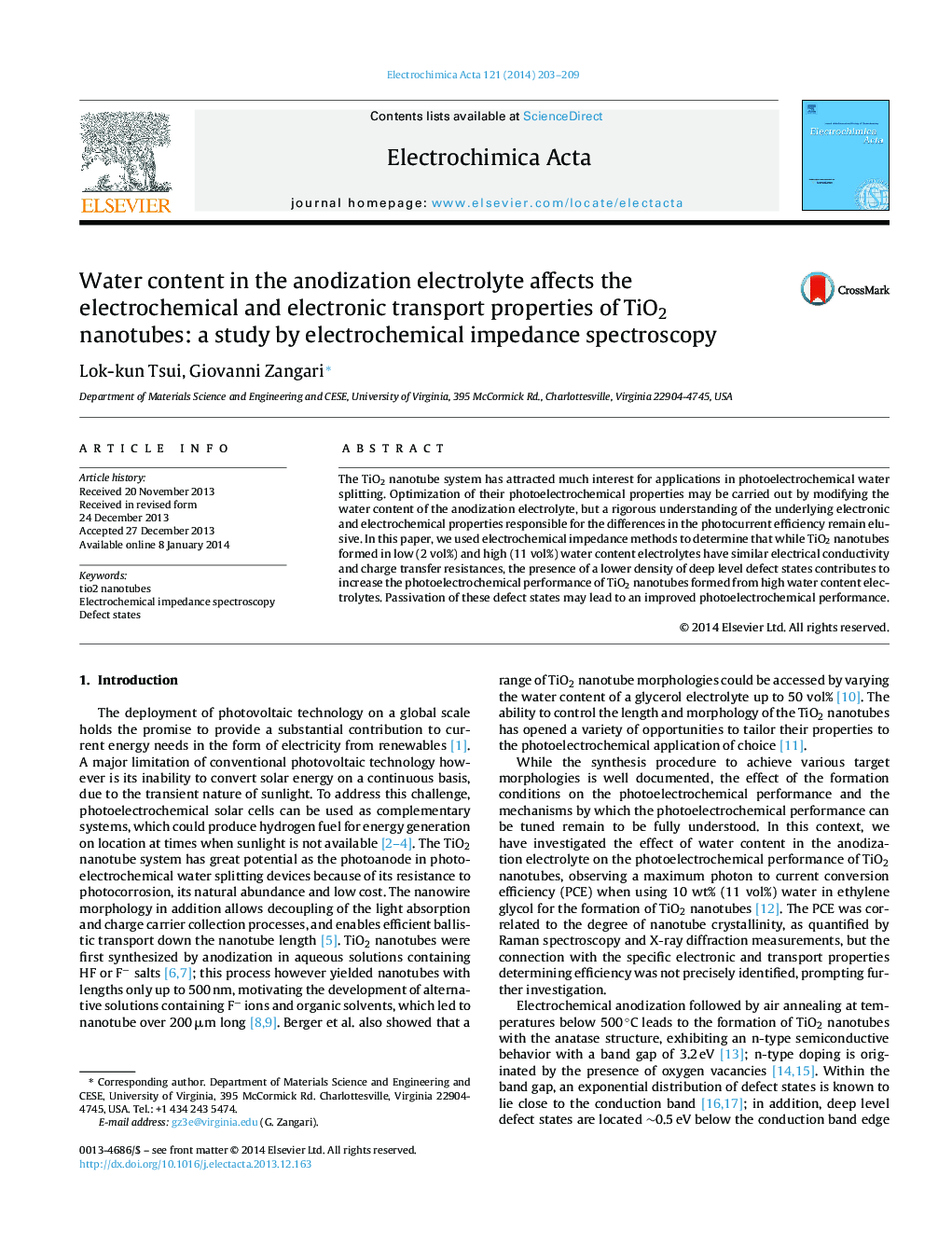| Article ID | Journal | Published Year | Pages | File Type |
|---|---|---|---|---|
| 186550 | Electrochimica Acta | 2014 | 7 Pages |
The TiO2 nanotube system has attracted much interest for applications in photoelectrochemical water splitting. Optimization of their photoelectrochemical properties may be carried out by modifying the water content of the anodization electrolyte, but a rigorous understanding of the underlying electronic and electrochemical properties responsible for the differences in the photocurrent efficiency remain elusive. In this paper, we used electrochemical impedance methods to determine that while TiO2 nanotubes formed in low (2 vol%) and high (11 vol%) water content electrolytes have similar electrical conductivity and charge transfer resistances, the presence of a lower density of deep level defect states contributes to increase the photoelectrochemical performance of TiO2 nanotubes formed from high water content electrolytes. Passivation of these defect states may lead to an improved photoelectrochemical performance.
